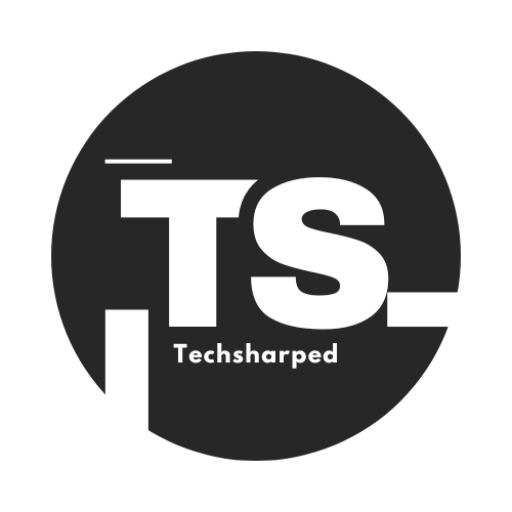Introduction of SOA OS23 for Smarter System
SOA OS23 for Smarter System Architecture software upgrade—it’s a full-scale shift in how systems operate in 2025. Designed to merge operating systems with Service-Oriented Architecture (SOA) principles, it offers smarter, faster, and more modular system performance.
Businesses today face constant pressure to scale, evolve, and integrate new services. SOA OS23 simplifies these demands by enabling services to run independently yet communicate seamlessly—directly from the operating system level.
What Makes SOA OS23 Revolutionary?
Native Microservices Support
SOA OS23 is optimized for microservices architecture out-of-the-box. Developers don’t need to manually configure third-party tools for service orchestration. Everything is embedded at the OS level, saving time and resources.
Service Autodiscovery
Instead of complex service registries, SOA OS23 introduces intelligent service discovery. It automatically detects, connects, and updates service endpoints within a system or across a cloud network.
Lightweight Footprint
Unlike older monolithic systems, SOA OS23 is lightweight and modular, perfect for IoT devices, embedded systems, and cloud-native applications.
Background: SOA OS23 for Smarter System
From Centralized to Decentralized Systems
Traditional OS designs focused on centralized processing. With SOA OS23, the shift is toward decentralized service processing, which boosts resilience and enables independent service scaling.
Blending OS with Architecture
In the past, SOA was layered over an operating system. Now, SOA OS23 integrates SOA principles into the core kernel, reducing friction and increasing performance.
SOA OS23 vs Traditional Operating Systems
| Feature | Traditional OS | SOA OS23 |
|---|---|---|
| Service Management | Manual | Automated Service Discovery |
| Scalability | Limited | Horizontally Scalable |
| OS Updates | Full System Restart | Hot-Swappable Modules |
| Communication Style | Process-Based | Service Messaging Layer |
| Developer Experience | Complex | Developer-Friendly Tools |
Key Benefits of SOA OS23 for Smarter System in 2025
Faster Development Cycles
Teams using SOA OS23 report 30–50% faster deployment times due to reduced configuration needs and built-in microservice orchestration.
Robust Security Architecture
With features like zero-trust architecture, service encryption, and container sandboxing, SOA OS23 delivers enterprise-level security.
Better Uptime and Service Recovery
If a service fails, only that specific module is restarted—no downtime for the full system, ensuring more stable applications.
Real-World Applications of SOA OS23 for Smarter System
Financial and Banking Systems
Banks can run secure and fast transaction services using SOA OS23’s encrypted service layers.
Healthcare Platforms
Patient data, lab results, and hospital management services can run as independent but connected services using SOA OS23.
Smart City Infrastructure
SOA OS23 helps cities manage traffic, utilities, and surveillance through distributed service modules.
Industrial Automation
In manufacturing and industrial systems, SOA OS23 ensures fault-tolerant communication between sensors, machines, and cloud servers.
How to Start Using SOA OS23 for Smarter System
Step 1 – Learn SOA Basics
Before jumping in, ensure your team understands core Service-Oriented Architecture principles.
Step 2 – Install SOA OS23 on a Test Machine
Download the stable release of SOA OS23 and set up a testing sandbox or virtual machine to experiment.
Step 3 – Deploy Your First Service
Use the native SDK to deploy a simple service and explore how auto-discovery and service messaging works.
Step 4 – Integrate with Existing Systems
Start migrating services from your current system gradually while monitoring performance improvements.
Challenges of Adopting SOA OS23 for Smarter System
While SOA OS23 is now seen as a futuristic operating system for modular services, its development journey was not without hurdles. Understanding the past challenges gives us insight into how it evolved into a stable and scalable platform.
Complexity in Service Integration
In its early stages, SOA OS23 struggled with integrating services developed in different programming languages or hosted on various platforms. This made initial adoption hard for teams with mixed tech stacks.
Lack of Standardization
There were no universal standards for service communication or data formats. Without a consistent protocol, developers faced issues with compatibility, debugging, and service failure.
Limited Tools and SDK Support
Earlier versions had limited toolchains and developer kits, making it difficult for teams to build, test, and deploy services efficiently.
Security Gaps
Initially, SOA OS23 lacked strong built-in encryption and authentication layers, leaving services exposed to cyberattacks and data leaks.
High Resource Consumption
The system required more memory and processing power, especially when managing many independent services. This posed challenges for small or resource-constrained environments.
Why SOA OS23 Is Critical for the Future
By merging the power of SOA with operating system design, SOA OS23 prepares systems for cloud-native applications, edge computing, and AI-driven automation. It’s future-ready, developer-friendly, and scalable at its core.
Whether you are running enterprise-grade systems, managing IoT networks, or building SaaS platforms—SOA OS23 provides the foundation for efficient, flexible, and reliable service delivery.
Conclusion: SOA OS23 for Smarter System
SOA OS23 for Smarter System Architecture represents a monumental leap in computing. It’s not just an operating system—it’s a complete architecture layer that enables innovation, agility, and resilience. As businesses move toward decentralized and intelligent systems, SOA OS23 will be at the center of that transformation.
(FAQs) About SOA OS23 for Smarter System
1. What is SOA OS23 and why is it important?
SOA OS23 stands for Service-Oriented Architecture Operating System 2023.
It combines an operating system’s core functions with service-based architecture.
This makes systems more scalable, modular, and adaptable to change.
SOA OS23 is essential for modern, cloud-native and distributed applications.
2. How is SOA OS23 different from traditional operating systems?
Traditional OS designs are monolithic and tightly coupled.
SOA OS23 breaks this mold by managing independent services as core components.
It supports microservices, auto-scaling, and dynamic service orchestration.
This results in better flexibility, faster deployment, and resilience.
3. Who should use SOA OS23 for Smarter System?
SOA OS23 is ideal for developers, architects, and DevOps teams.
It works well for businesses transitioning to microservices or cloud environments.
IoT, healthcare, Technology, and eCommerce can especially benefit from it.
Anyone building scalable or distributed systems should explore it.
4. What are the main features of SOA OS23?
Key features include native microservices support, service discovery, and encryption.
It also has container orchestration, lightweight architecture, and high scalability.
Built-in monitoring tools help manage system performance in real-time.
Together, these features support modern development at scale.
5. Is SOA OS23 secure for enterprise use?
Yes, SOA OS23 is built with a zero-trust architecture at its core.
It includes secure APIs, TLS encryption, role-based access, and service isolation.
Authentication mechanisms like OAuth 2.0 are built-in.
These features make it suitable for enterprise-grade security needs.
6. Can SOA OS23 integrate with legacy systems?
Yes, SOA OS23 supports backward compatibility through adapters and APIs.
It allows legacy systems to function alongside modern services without issues.
This gradual integration reduces the cost and risk of full system migration.
Businesses can modernize in phases using SOA OS23’s hybrid support.
7. How does SOA OS23 handle updates and service failures?
Services in SOA OS23 can be updated or restarted independently.
This prevents system-wide downtime and improves availability.
Failed services are automatically recovered or rolled back securely.
This modular recovery model makes maintenance safer and more efficient.
8. Does SOA OS23 support containerization and cloud platforms?
Yes, SOA OS23 natively supports Docker, Kubernetes, and other tools.
It integrates easily with AWS, Azure, GCP, and hybrid clouds.
You can deploy services in containers for speed and efficiency.
This makes it ideal for both edge and cloud-native applications.
9. What challenges does SOA OS23 solve for developers
It solves the problems of service orchestration, manual scaling, and integration.
By handling communication and resource allocation automatically, it saves time.
Developers spend less effort managing infrastructure and more building features.
SOA OS23 streamlines development cycles and reduces technical debt.
10. How can I get started with SOA OS23?
Begin by exploring its documentation and installing it in a sandbox environment.
Start deploying small services to test service discovery and communication.
Use the SDK and CLI tools provided for integration and monitoring.
Gradually scale up as you gain comfort with its modular design.

